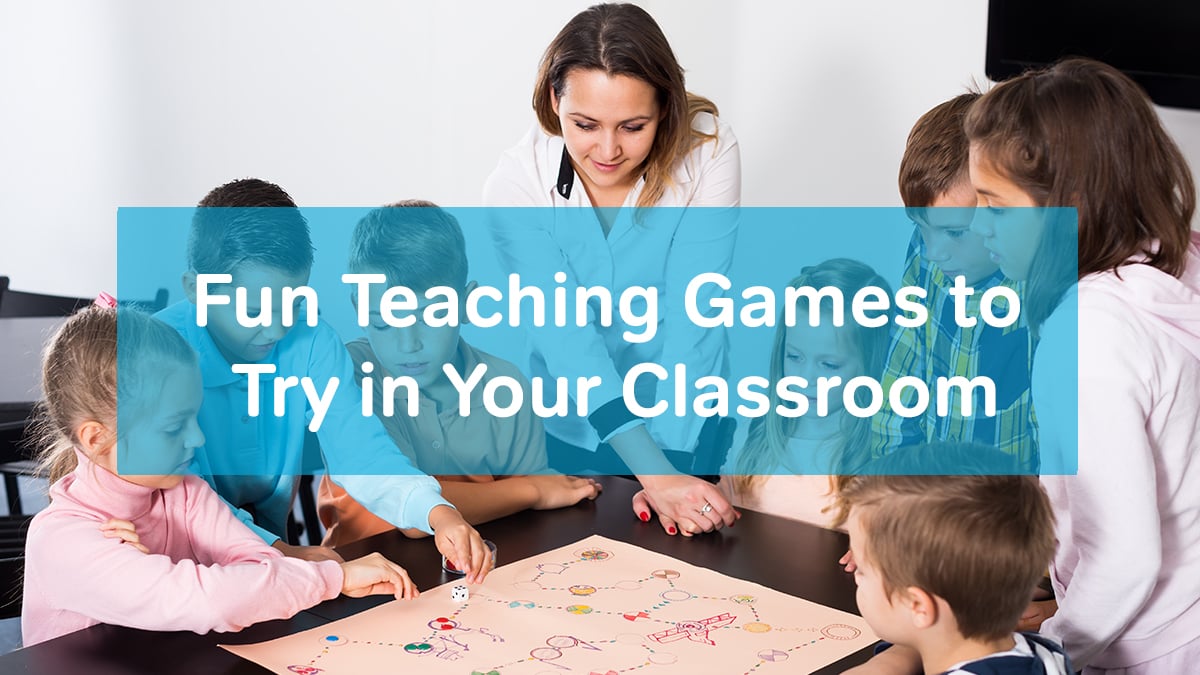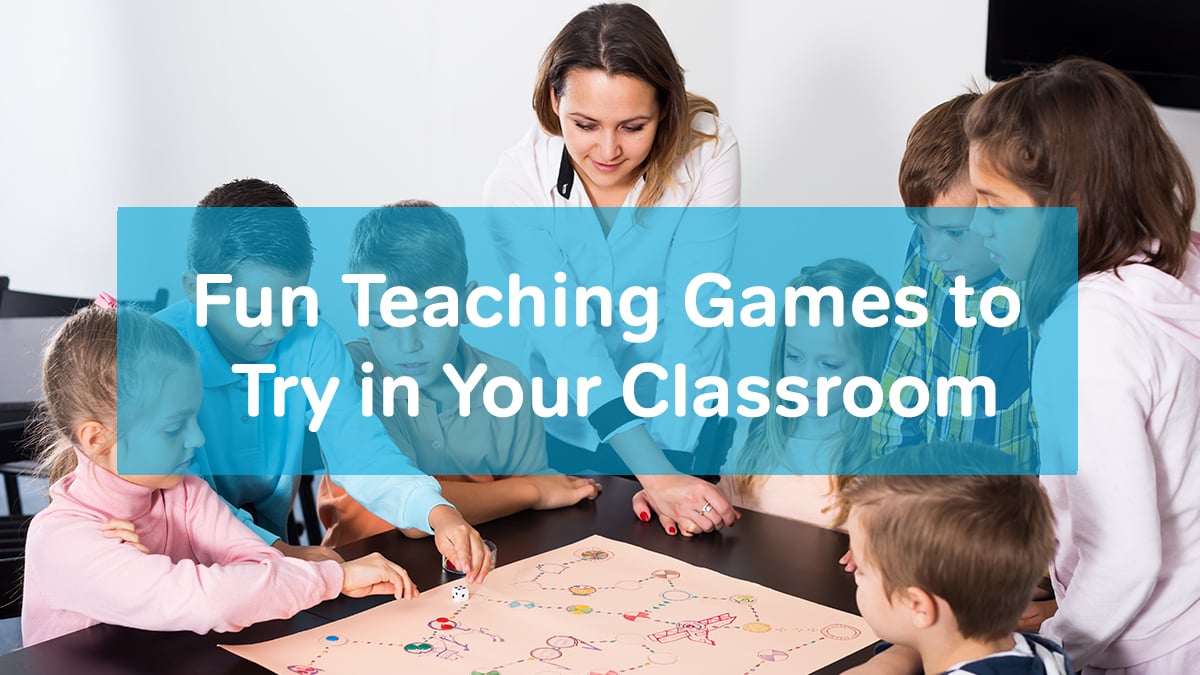
Incorporating games into your lessons is one of many teaching strategies. And it has many benefits. First, it is a great way to get students up and moving! Giving your students a chance to get out of their seats and move around can help them release some energy. This helps with classroom management since your students will calmer and less fidgety. Using games can make the school day more fun for you as well as your students--and are a fun, interactive way review what you’re teaching. So try some of these fun teaching games with your students to find out which ones they enjoy.

Password
Did you ever watch Password on television? The show had 2 contestants who needed to discover a secret word. They each had a partner who would provide 1-word clues to help the contestant discover the secret word.
Get the whole class involved by having students raise their hands to provide clues. Clues could be synonyms, vocabulary words, etc. This could be a great way to review vocabulary words or terms from a particular unit.
Sparkle
I’ve heard this game referred to as Sparkle or Buzz. In elementary school, my teachers would use it to review for spelling tests, but this could also be a great way to practice multiplication tables and other subject areas, too. For spelling review, these are the steps that a teacher would take.
- Announce the spelling word, such as Friday.
- The first student says “capital F”.
- The next student says “r”, and it would continue to go around the room until the entire word was spelled correctly.
- When the word is completed, the next student says “Sparkle!” or “Buzz!”
If a student says the wrong letter or says “Sparkle” too soon, then they sit down. The game continues until there is only one student left standing.
Key Master
If you need a quick and easy game to quiet down the class, try this one. Choose one student to be the key master. He or she will sit on a chair in the middle of the classroom with a blindfold over his or her eyes. Place an object under the key master’s chair. Then, have the rest of the students take turns trying to get the object. The person on the chair should try to point in the direction of the students sneaking up to them. If they point correctly, the sneaking student sits down. So in order to win the game, all the students need to be as quiet as possible.
Red Elbow
If you’re practicing colors or body parts with younger students, try this game. All you need to do is call out a body part and a color. Students then look around the room to find something of that color. Then, they should touch that object with the body part that you called out. Some examples that you could say include:
- Red elbow
- Green hand
- Blue foot
- Yellow ear
- Purple thumb
Chalkboard Baseball
When reviewing a topic, divide the class into 2 teams. Draw a baseball diamond on the chalkboard. It might be helpful to shade the entire chalkboard, too. Have the first team answer a review question. If they get the answer right, one team member can come to the board and throw an eraser at the board. If the chalkboard is shaded, then you may have an easier time seeing where the eraser hit on the board. Whatever base the student hits is the base that they earn.
Silence
Have the students put themselves in order without talking to one another. At the beginning of the year, students can get to know one another by putting themselves in alphabetical order, height order, or age order. You can also use this game to practice putting other things in order, such as:
- U.S. Presidents
- Fractions
- Times on a clock
- State capitols
- Historical events
Pass the Chicken
All you need to play this game is a rubber chicken. You could also replace the rubber chicken with a stuffed animal or ball. Have students stand in a circle. Give one student a particular topic, such as U.S. presidents, countries in South America, rivers, animals in the desert, or candy bars. The rest of the students should start passing the chicken around the circle. The student should name 5 objects in the category provided. If they can name all 5 objects before the chicken returns to them, then they win the round.
Spy in the Camp
Have one student leave the room. While the student is gone, assign someone to be the leader. When the student returns, the leader should start doing an action. The rest of the class should follow along, being careful not to look too much at the leader. The student who was out of the room should walk around and guess who the leader is in the classroom.
Adverb Charades
Give each student 2 note cards. Have students write a verb on 1 note card and an adverb on the other. Place all the verb note cards into 1 bowl, and place all the adverbs in a different bowl. Have students come up one at a time to draw a verb and adverb from the bowl. Then, the students act it out while the rest of the class tries to guess what verb and adverb was drawn. Some of the things that students may need to act out include “dance happily” or “walk hungrily.”


